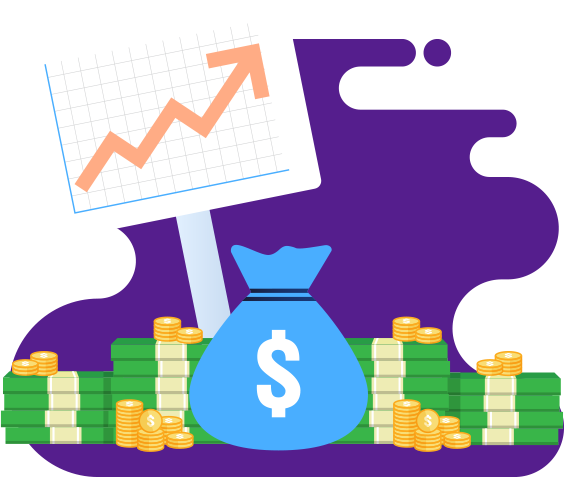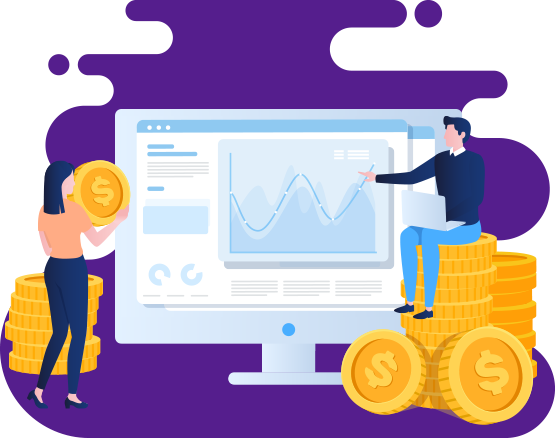education
ETFs, Commodities and Bonds Trading
Analyzing ETFs
Given the bewildering number of ETF choices that investors now have to contend with, it’s important to consider the following factors:
Level of Assets
To be considered a viable investment choice, an ETF should have a minimum level of assets, a common threshold being at least $10 million. An ETF with assets below this threshold is likely to have a limited degree of investor interest. As with a stock, limited investor interest translates into poor liquidity and wide spreads.
Trading Activity
An investor needs to check if the ETF that is being considered trades in sufficient volume on a daily basis. Trading volume in the most popular ETF runs into millions of shares daily; on the other hand, some ETF barely trade at all. Trading volume is an excellent indicator of liquidity, regardless of the asset class. Generally speaking, the higher the trading volume for an ETF, the more liquid it is likely to be and the tighter the bid-ask spread. These are especially important considerations when it is time to exit the ETF.
Level of Assets
To be considered a viable investment choice, an ETF should have a minimum level of assets, a common threshold being at least $10 million. An ETF with assets below this threshold is likely to have a limited degree of investor interest. As with a stock, limited investor interest translates into poor liquidity and wide spreads.
Underlying Index or Asset
Consider the underlying index or asset class on which the ETF is based. From the point of view of diversification, it may be preferable to invest in an ETF that is based on a broad, widely followed index, rather than an obscure index that has a narrow industry or geographic focus.
Tracking Error
While most ETF track their underlying indexes closely, some do not track them as closely as they should. All else being equal, an ETF with minimal tracking error is preferable to one with a greater degree of error.
Market Position
“First-mover advantage” is important in the ETF world, because the first ETF issuer for a particular sector has a decent probability of garnering the lion’s share of assets, before others jump on the bandwagon. It is therefore prudent to avoid ETF that are mere imitations of an original idea, because they may not differentiate themselves from their rivals and attract investors’ assets.


Analyzing Commodities
When you are trading commodities, remember that you are trading the trend.
Typically, commodities tend to follow larger cycles and sub-cycles. Of course, you will have bouts of volatility within these larger cycles. But you need to catch this trend and trade within the contours of this trend.
Also, there is a much higher element of leverage. What do we mean by leverage in this context? Of course, we are referring to the margin that needs to be paid in this case.
For example, if you take a long or short position in index futures, you have to pay around 10% margin (that means a leverage of 10 times) and you have to pay around 15% margin for stock futures (that means a leverage of 6.66 times).
When it comes to commodities the leverage offered is much higher. Normally, the leverage is as high as 500 times in many cases.
In fact, you can further enhance your leverage if you are willing to put cover orders with an in-built stop loss.
There are 2 things you need to remember when you use leverage in commodities trading.
Firstly, you also need to define the maximum percentage of capital that you are willing to lose and trade accordingly.
Secondly, in leverage positions, just as profits can be magnified, losses can also get magnified.
Hence it is very important to use your leverage in commodities very judiciously.
Analyzing Bonds
Bonds are fixed-income securities that are issued by corporations and governments to raise capital.
The bond issuer borrows capital from the bondholder and makes fixed payments to them at a fixed (or variable) interest rate for a specified period.
What determines the price of a bond?
Bonds can be bought and sold in the “secondary market” after they are issued. While some bonds are traded publicly through exchanges, most trade over the counter between large broker-dealers acting on their clients’ or their own behalf.
A bond’s price and yield determine its value in the secondary market. Obviously, a bond must have a price at which it can be bought and sold and a bond’s yield is the actual annual return an investor can expect if the bond is held to maturity. Yield is therefore based on the purchase price of the bond as well as the coupon.
A bond’s price always moves in the opposite direction of its yield, as previously illustrated. The key to understanding this critical feature of the bond market is to recognize that a bond’s price reflects the value of the income that it provides through its regular coupon interest payments. When prevailing interest rates fall – notably, rates on government bonds – older bonds of all types become more valuable because they were sold in a higher interest rate environment and therefore have higher coupons. Investors holding older bonds can charge a “premium” to sell them in the secondary market. On the other hand, if interest rates rise, older bonds may become less valuable because their coupons are relatively low, and older bonds therefore trade at a “discount.”
Understanding bond market prices
In the market, bond prices are quoted as a percent of the bond’s face value. The easiest way to understand bond prices is to add a zero to the price quoted in the market. For example, if a bond is quoted at 99 in the market, the price is $990 for every $1,000 of face value and the bond is said to be trading at a discount. If the bond is trading at 101, it costs $1,010 for every $1,000 of face value and the bond is said to be trading at a premium. If the bond is trading at 100, it costs $1,000 for every $1,000 of face value and is said to be trading at par. Another common term is “par value,” which is simply another way of saying face value. Most bonds are issued slightly below par and can then trade in the secondary market above or below par, depending on interest rate, credit or other factors.
Put simply, when interest rates are rising, new bonds will pay investors higher interest rates than old ones, so old bonds tend to drop in price. Falling interest rates, however, mean that older bonds are paying higher interest rates than new bonds, and therefore, older bonds tend to sell at premiums in the market.
On a short-term basis, falling interest rates can boost the value of bonds in a portfolio and rising rates may hurt their value. However, over the long term, rising interest rates can actually increase a bond portfolio’s return as the money from maturing bonds is reinvested in bonds with higher yields. Conversely, in a falling interest rate environment, money from maturing bonds may need to be reinvested in new bonds that pay lower rates, potentially lowering longer-term returns.
Measuring bond risk: what is duration?
The inverse relationship between price and yield is crucial to understanding value in bonds. Another key is knowing how much a bond’s price will move when interest rates change.
To estimate how sensitive a particular bond’s price is to interest rate movements, the bond market uses a measure known as duration. Duration is a weighted average of the present value of a bond’s cash flows, which include a series of regular coupon payments followed by a much larger payment at the end when the bond matures and the face value is repaid, as illustrated below.
Duration, like the maturity of the bond, is expressed in years, but as the illustration shows, it is typically less than the maturity. Duration will be affected by the size of the regular coupon payments and the bond’s face value. For a zero-coupon bond, maturity and duration are equal since there are no regular coupon payments and all cash flows occur at maturity. Because of this feature, zero-coupon bonds tend to provide the most price movement for a given change in interest rates, which can make zero-coupon bonds attractive to investors expecting a decline in rates.
The end result of the duration calculation, which is unique to each bond, is a risk measure that allows investors to compare bonds with different maturities, coupons and face values on an apples-to-apples basis. Duration provides the approximate change in price that any given bond will experience in the event of a 100-basis-point (one percentage point) change in interest rates. For example, suppose that interest rates fall by 1%, causing yields on every bond in the market to fall by the same amount. In that event, the price of a bond with a duration of two years will rise 2% and the price of a five-year-duration bond will rise 5%.
The weighted average duration can also be calculated for an entire bond portfolio, based on the durations of the individual bonds in the portfolio.
The role of bonds in a portfolio
Since governments began to issue bonds more frequently in the early twentieth century and gave rise to the modern bond market, investors have purchased bonds for several reasons: capital preservation, income, diversification and as a potential hedge against economic weakness or deflation. When the bond market became larger and more diverse in the 1970s and 1980s, bonds began to undergo greater and more frequent price changes and many investors began to trade bonds, taking advantage of another potential benefit: price, or capital, appreciation. Today, investors may choose to buy bonds for any or all of these reasons.
Capital preservation: Unlike equities, bonds should repay principal at a specified date, or maturity. This makes bonds appealing to investors who do not want to risk losing capital and to those who must meet a liability at a particular time in the future. Bond have the added benefit of offering interest at a set rate that is often higher than short-term savings rates.
Income: Most bonds provide the investor with “fixed” income. On a set schedule, whether quarterly, twice a year or annually, the bond issuer sends the bondholder an interest payment, which can be spent or reinvested in other bonds. Stocks can also provide income through dividend payments, but dividends tend to be smaller than bond coupon payments, and companies make dividend payments at their discretion, while bond issuers are obligated to make coupon payments.
Capital appreciation: Bond prices can rise for several reasons, including a drop in interest rates and an improvement in the credit standing of the issuer. If a bond is held to maturity, any price gains over the life of the bond are not realized; instead, the bond’s price typically reverts to par (100) as it nears maturity and repayment of the principal. However, by selling bonds after they have risen in price – and before maturity – investors can realize price appreciation, also known as capital appreciation, on bonds. Capturing the capital appreciation on bonds increases their total return, which is the combination of income and capital appreciation. Investing for total return has become one of the most widely used bond strategies over the past 40 years.
Diversification: Including bonds in an investment portfolio can help diversify the portfolio. Many investors diversify among a wide variety of assets, from equities and bonds to commodities and alternative investments, in an effort to reduce the risk of low, or even negative, returns on their portfolios.
Potential hedge against an economic slowdown or deflation: Bonds can help protect investors against an economic slowdown for several reasons. The price of a bond depends on how much investors value the income the bond provides. Most bonds pay a fixed income that doesn’t change. When the prices of goods and services are rising, an economic condition known as inflation, a bond’s fixed income becomes less attractive because that income buys fewer goods and services. Inflation usually coincides with faster economic growth, which increases demand for goods and services. On the other hand, slower economic growth usually leads to lower inflation, which makes bond income more attractive. An economic slowdown is also typically bad for corporate profits and stock returns, adding to the attractiveness of bond income as a source of return. If the slowdown becomes bad enough that consumers stop buying things and prices in the economy begin to fall – a dire economic condition known as deflation – then bond income becomes even more attractive because bondholders can buy more goods and services (due to their deflated prices) with the same bond income. As demand for bonds increases, so do bond prices and bondholder returns.
Sources:
www.wikipedia.org / www.corporatefinanceinstitute.com / www.businessdictionary.com / www.readyratios.com / www.moneycrashers.com




